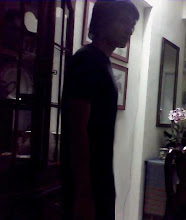Sensors is the main topic of this chapter, as it introduces us to all kinds of sensors
- light, touch, sound, and ultrasonic.
The chapter also tells us of each sensor's behavior and capabilities. Each sensor is useful as it can help robots face many challenges as well as understand its surroundings: additionally, sensors used on a robot is as useful as the human's "five-senses". All humans rely on their five-senses just as robots do, and each "sense" reacts/interacts with certain things differently in order to surpass certain challenges, whether they are simple or difficult.
Recently in class we have been using the light sensor in order to program our robots to follow a black line. Certain things needed to be taken into account - position, and light value. Such considerations are significant to the performance of the light sensor. By using the light sensor to read light values, i programmed the robot to turn right or left depending on whether the light value reading is greater or less than the threshold set (the robot has to perform several swing turns in order proceed along the black line) - light value is important as it is the very thing that determines the robot's next action. Me and my partner ran into a problem, the robot wasn't able to stay on course and so with the help of a hint we suspected the problem was due to the light sensor's position. We placed the light sensor where it would create smaller swing turns - position is important as it determines how well the light sensor performs in specific situations.
Final Class Blog
-
Robotics has come to an end after a semester of hard work and programming.
I have learned many new things such as robot construction, programming the
NXT, ...
16 years ago


Your summary of Chapter 4 is well organized, and easy for readers to understand. I like the part where you compared human's five sensors and robot's four sensors. It is almost same, except olfactory, speaking, and ultrasonic. The robot can not talk (while, it can make sounds), and it can not smell. But oppose to this, we human does not have any ultrasonic sensor. I do not think you have answered one of question, which is "Give examples for when you might use the various sensors". I think you should add a comment to answer the question. About the light sensor is perfect, and it shows me how deep you thought about it. Also, I like the part where you exampled a failure of tracking line based on your experiment.
ReplyDeleteGood Luck
Well done Nash your summary on chapter 4 is very detailed and good. I like the part where you made comparisons between a human and robot about their senses. You explain the light sensor perfectly and give me a vivid image of the failure on the experiment.
ReplyDelete